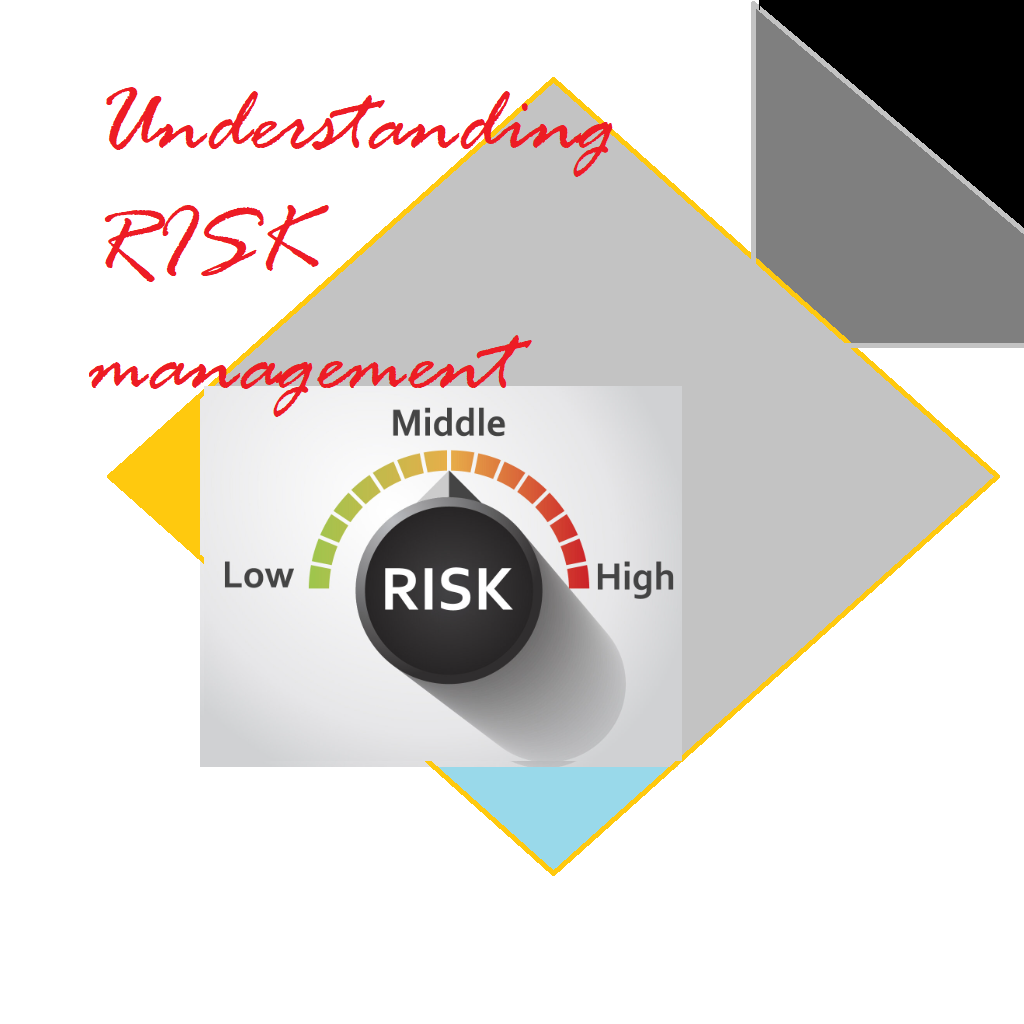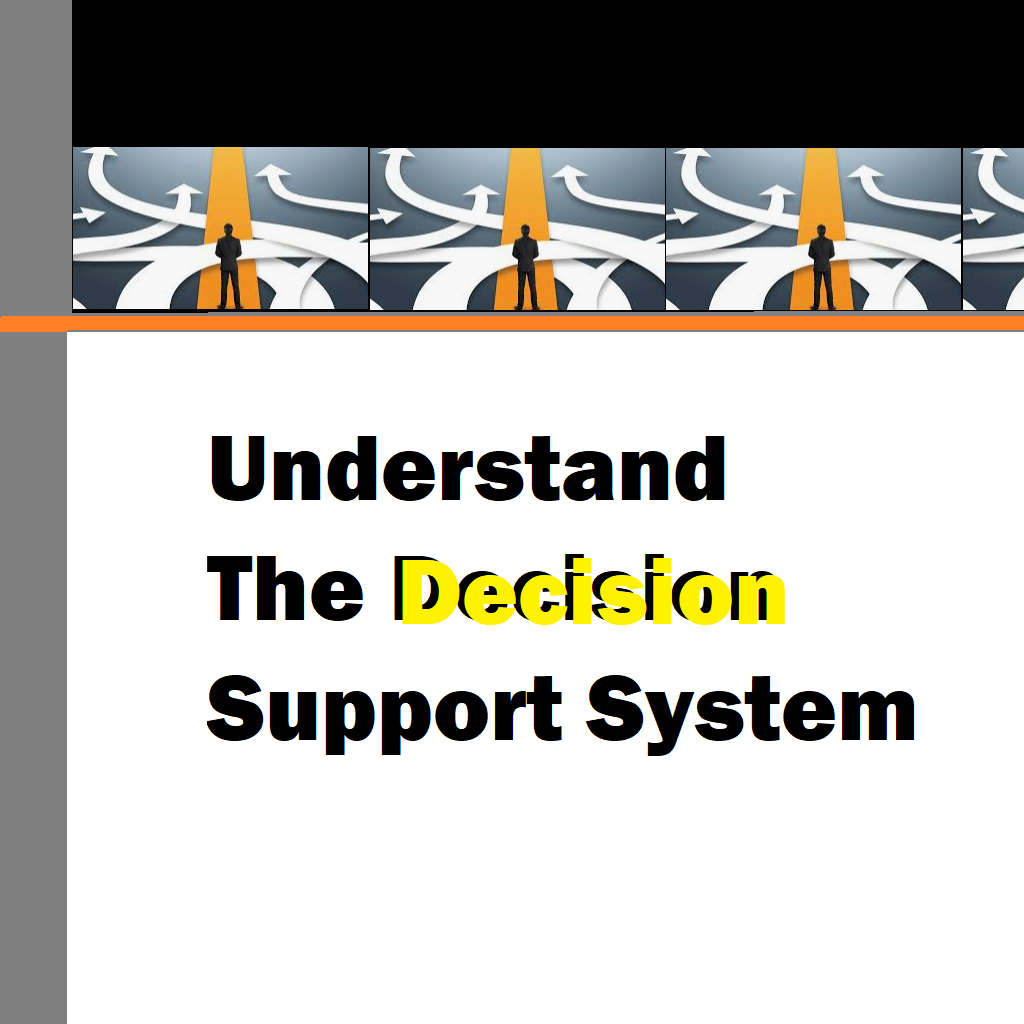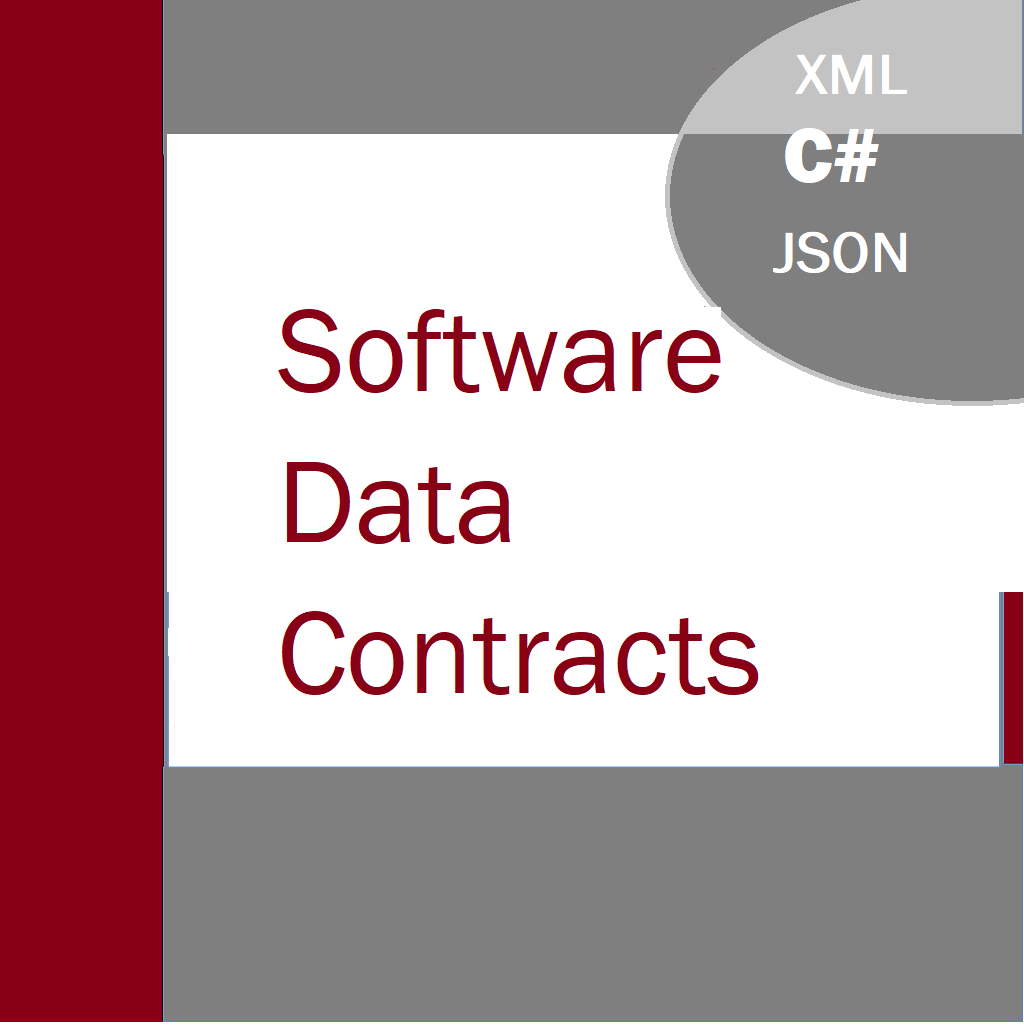The term “risk management” was first coined by Peter Drucker, a renowned management consultant, educator, and author. He is often referred to as the “father of modern management” and introduced the concept of risk management in the mid-20th century. Drucker’s contributions to the field of management and his emphasis on effective risk assessment and mitigation have had a significant impact on business practices worldwide.
Risk management refers to the process of identifying, assessing, and mitigating potential risks and uncertainties that may impact an individual, organization, project, or any other endeavour. It involves a systematic approach to understanding and evaluating various threats and opportunities that could affect the achievement of objectives. The goal of risk management is to minimize potential negative impacts while maximizing opportunities to enhance overall outcomes.
In practical terms, risk management typically involves the following steps:
- Risk Identification: Identifying potential risks and threats that could arise during the course of an activity or project. This step involves brainstorming, analyzing historical data, and seeking input from stakeholders.
- Risk Assessment: Evaluating the significance and likelihood of each identified risk. This assessment helps prioritize risks based on their potential impact.
- Risk Mitigation: Developing and implementing strategies to reduce or eliminate the likelihood and/or impact of identified risks. These strategies may include preventive measures, contingency plans, risk transfer (e.g., insurance), or risk acceptance if the potential impact is deemed acceptable.
- Risk Monitoring: Continuously monitoring the identified risks and the effectiveness of the mitigation measures put in place. This ensures that the risk management strategies remain relevant and effective over time.
Risk management is a fundamental aspect of decision-making in various sectors, including business, finance, healthcare, engineering, and project management. By proactively addressing potential risks, individuals and organizations can make informed choices and increase the likelihood of successful outcomes.
CONTENT
Why monitoring or risk is important?
Strategic Risk and how to tackle it
Risk Identification
Identifying risks is a crucial step in the risk management process that involves recognizing potential threats and uncertainties that could impact an individual, organization, project, or any other endeavor. To effectively identify risks, various methods and techniques can be employed:
- Brainstorming: Gather a diverse group of stakeholders, including team members, experts, and relevant parties, and conduct brainstorming sessions. Encourage open discussions to generate a wide range of potential risks. No idea should be dismissed during this phase, as even seemingly minor concerns may have significant implications.
- SWOT Analysis: Perform a SWOT (Strengths, Weaknesses, Opportunities, Threats) analysis to identify both internal and external factors that may pose risks or create opportunities for the organization. Analyzing weaknesses and threats helps in understanding potential areas of vulnerability.
- Historical Data Review: Examine past projects, events, or experiences within the organization or industry to identify recurring risks or patterns. Historical data can provide valuable insights into previously encountered risks and their impacts.
- Checklists: Utilize checklists specific to the industry or domain to ensure that common risks are not overlooked. These checklists can serve as a valuable reference point during risk identification.
- Expert Consultation: Seek advice and input from subject matter experts who have experience in the relevant field. Their expertise can help identify risks that might be overlooked by others.
- External Research: Conduct thorough research on industry trends, regulatory changes, technological advancements, and global developments that could influence the project or organization. Being aware of external factors is essential in identifying potential risks.
- Scenario Analysis: Develop hypothetical scenarios based on various factors and assess the risks associated with each scenario. Scenario analysis helps in envisioning different potential futures and the risks they may entail.
- Process Mapping: Map out the processes involved in the project or organization to identify potential points of failure or vulnerabilities. Understanding how different elements interact can help pinpoint where risks may arise.
- Feedback and Surveys: Seek feedback from employees, customers, suppliers, or other stakeholders to gain insights into potential risks they have observed or experienced.
- Risk Registers: Maintain a risk register or database to document identified risks, their descriptions, potential impacts, and likelihood of occurrence. A risk register serves as a valuable reference throughout the risk management process.
It is important to note that risk identification is an ongoing and iterative process. As the project or organization evolves, new risks may emerge, and previously identified risks may change in significance or likelihood. Regularly reviewing and updating the risk identification process ensures that the risk management efforts remain relevant and effective.
Assess Risk
Assessing risk to a project involves systematically evaluating the identified risks to understand their potential impact and likelihood of occurrence. The goal is to prioritize and focus on the most critical risks that could significantly affect the project’s success. Here are the steps to assess risk to your project:
- Risk Analysis: Begin by analyzing each identified risk in detail. Understand the nature of the risk, its potential consequences on the project’s objectives, and the factors contributing to its occurrence. This analysis provides a comprehensive view of the risks and their potential implications.
- Impact Assessment: Assess the potential impact of each risk on the project’s scope, timeline, budget, and overall success criteria. Quantify the potential negative consequences and consider any positive outcomes that might arise from exploiting opportunities.
- Likelihood Evaluation: Evaluate the likelihood of each risk materializing during the project’s lifecycle. This evaluation considers historical data, expert judgment, and any relevant external factors that may influence the risk’s occurrence.
- Risk Scoring: Use a risk scoring or rating system to rank the identified risks based on their impact and likelihood. This scoring helps prioritize risks and allows project teams to allocate resources effectively.
- Risk Response Planning: Develop appropriate risk response plans for the high-priority risks. These plans outline specific actions to either avoid, mitigate, transfer, or accept the risk. The response strategy depends on the risk’s characteristics and the project’s risk appetite.
- Cost-Benefit Analysis: Perform a cost-benefit analysis for each risk response strategy. Consider the cost of implementing the response versus the potential benefits in terms of risk reduction or opportunity exploitation.
- Contingency Planning: Identify contingency plans to address unforeseen risks or events that may have a severe impact on the project. Contingency plans act as fallback measures to be executed if certain risks materialize.
- Integration with Project Planning: Integrate the risk assessment and response planning with the overall project planning. Ensure that risk management activities are aligned with the project’s schedule and budget.
- Regular Review: Continuously monitor and review the identified risks throughout the project’s lifecycle. New risks may emerge, and the impact and likelihood of existing risks may change as the project progresses.
- Communication and Stakeholder Engagement: Clearly communicate the identified risks, their assessment results, and the planned risk response strategies to all relevant stakeholders. Engage stakeholders in risk discussions and decision-making to foster a shared understanding and support for risk management efforts.
By following these steps, project teams can effectively assess risks, make informed decisions, and proactively manage uncertainties to increase the likelihood of project success. Risk assessment is an ongoing process that requires constant vigilance and adaptability as the project unfolds.
Risk Mitigation
Risk mitigation is the process of implementing measures and strategies to reduce the likelihood and impact of potential risks identified during the risk assessment phase. It is a proactive approach to managing risks and aims to minimize their adverse effects on an individual, organization, project, or any other endeavor. The primary goal of risk mitigation is to enhance preparedness and increase the chances of successful outcomes in the face of uncertainties.
Here are some common risk mitigation strategies:
1. Risk Avoidance: In some cases, the best approach is to avoid the risk altogether. This involves refraining from activities or decisions that could expose the organization to significant potential harm.
2. Risk Reduction: Implement measures that reduce the likelihood or severity of the identified risks. This may involve improving processes, adopting safety measures, or enhancing security protocols.
3. Risk Transfer: Shift the financial burden of a potential risk to a third party, such as an insurance company. Transferring risks through insurance can provide financial protection in case the risk materializes.
4. Contingency Planning: Develop contingency plans to respond to potential risk events. These plans outline specific actions to be taken if certain risks occur, ensuring that the organization can quickly adapt and recover.
5. Diversification: In investment or business contexts, diversifying portfolios or revenue streams can spread risk and reduce overreliance on a single source.
6. Training and Skill Development: Provide training to employees to enhance their skills and competencies, reducing the likelihood of human error and associated risks.
7. Regular Monitoring: Continuously monitor the risk landscape to identify any changes or new risks that may arise during the course of the project or operation.
8. Safety Measures: Implement safety protocols and procedures to protect employees, customers, and assets from potential risks.
9. Technological Solutions: Adopt technological advancements and tools that can automate processes, improve efficiency, and reduce the likelihood of certain risks.
10. Collaboration and Partnerships: Establish strategic partnerships and collaborations to share expertise and resources, enabling better risk management in complex or uncertain environments.
It is essential to customize risk mitigation strategies to the specific context and nature of the risks faced by the organization. Additionally, risk mitigation is an ongoing process that should be reviewed and updated regularly to ensure its relevance and effectiveness as the risk landscape evolves. By taking proactive measures to mitigate risks, individuals and organizations can enhance their resilience and minimize the potential negative impacts of uncertainties.
Why monitoring or risk is important?
Risk monitoring is an essential component of the risk management process, involving the continuous observation, assessment, and tracking of identified risks throughout the project or operational lifecycle. Its purpose is to ensure that risk responses remain effective, identify any changes in the risk environment, and provide timely insights to support decision-making. By actively monitoring risks, organizations can respond promptly to emerging threats and capitalize on opportunities as they arise.
Key aspects of risk monitoring include:
- Regular Review: Conducting regular reviews of the identified risks to assess their current status and potential impact on the project or organization. This review should take place at predetermined intervals or whenever significant changes occur.
- Key Risk Indicators (KRIs): Defining and monitoring Key Risk Indicators, which are specific metrics or parameters that act as early warning signs for potential risk events. KRIs help in detecting changes in risk levels and trigger proactive responses.
- Risk Response Evaluation: Evaluating the effectiveness of implemented risk responses to determine if they are achieving the intended outcomes. If a response is not producing the desired results, adjustments may be necessary.
- Risk Triggers: Defining specific events or conditions, known as risk triggers, that indicate when a risk is becoming more likely or imminent. When a risk trigger is activated, it prompts a predefined response or action.
- Risk Reporting: Providing regular risk reports to stakeholders, including project managers, senior management, and the board of directors. These reports should be clear, concise, and present relevant information on the status of risks and risk management efforts.
- Scenario Analysis: Continuously updating scenario analysis to assess how changes in the external environment or internal factors may impact the identified risks. Scenario analysis helps in anticipating potential developments and preparing appropriate risk responses.
- Stakeholder Engagement: Engaging with relevant stakeholders to gather insights, feedback, and information about potential risks that may not have been previously identified. Stakeholder perspectives can provide valuable input for risk monitoring activities.
- Risk Culture: Cultivating a risk-aware culture within the organization, where employees are encouraged to report risks and near-misses promptly. An open and transparent culture fosters early detection and effective risk management.
- Integration with Decision-making: Integrating risk monitoring into the decision-making process to ensure that risks are considered when making strategic or operational choices.
- Continuous Improvement: Regularly reviewing the risk monitoring process itself to identify areas for improvement. Feedback from stakeholders and lessons learned from past projects can inform enhancements to the risk management approach.
By consistently monitoring risks and staying vigilant, organizations can respond proactively to changing circumstances, make informed decisions, and increase their overall resilience in the face of uncertainties.
ERM
Enterprise Risk Management (ERM) is a comprehensive and strategic approach to managing risks across an entire organization. It involves identifying, assessing, and responding to risks in a way that aligns with the organization’s objectives and maximizes value creation. ERM goes beyond traditional risk management practices, which often focus on specific risks in isolation, and instead, it considers risks holistically, taking into account their interconnectedness and impact on the overall business.
In ERM, the emphasis is placed on integrating risk management into an organization’s core decision-making processes. This means that risk considerations are taken into account when formulating strategies, setting objectives, and allocating resources. By embedding risk management into the fabric of an organization, ERM helps create a risk-aware culture, where all employees understand their role in identifying and managing risks.
The ERM framework typically involves several key steps. The first step is to identify and categorize various risks that the organization faces, both internally and externally. These risks may include financial risks, operational risks, compliance risks, reputational risks, and strategic risks, among others. By having a comprehensive view of risks, an organization can better prioritize and address them effectively.
After identifying risks, the next step in ERM is to assess and evaluate their potential impact and likelihood of occurrence. This evaluation helps in understanding the level of risk exposure and enables organizations to allocate resources to manage risks based on their significance.
Once the risks are identified and assessed, the organization can develop risk response strategies. These strategies may involve risk avoidance, risk reduction, risk transfer (such as insurance), risk acceptance, or a combination of these approaches. The choice of response depends on the organization’s risk appetite and tolerance, as well as the cost-benefit analysis of various risk management actions.
ERM also emphasizes the importance of ongoing monitoring and communication of risks and risk management activities. Regular monitoring ensures that the effectiveness of risk responses is evaluated, and adjustments can be made as needed. Effective communication of risk-related information enables stakeholders, including senior management and the board of directors, to make informed decisions and exercise their oversight responsibilities.
Essentially, Enterprise Risk Management (ERM) is a proactive and integrated approach to managing risks across an organization. By considering risks in a comprehensive and interconnected manner, ERM helps organizations identify potential threats and opportunities, make informed decisions, and enhance resilience in a rapidly changing business environment.
Strategic Risk and how to tackle it
Strategic risk refers to the potential threats and uncertainties that can directly affect an organization’s ability to achieve its strategic objectives and long-term goals. Unlike operational or financial risks, which are more immediate and short-term in nature, strategic risks are broader and often stem from external factors such as changes in market dynamics, technological disruptions, shifts in consumer preferences, or geopolitical events. Identifying and effectively addressing strategic risks is crucial for the sustained success and competitiveness of an organization.
To tackle strategic risks, organizations can adopt the following approaches:
- Comprehensive Risk Assessment: Conduct a thorough risk assessment to identify and understand the various strategic risks that the organization faces. This involves engaging stakeholders from different levels and departments to gain a holistic view of potential threats and opportunities. The risk assessment should consider both internal factors (such as organizational capabilities and resources) and external factors (such as industry trends and competitive landscape).
- Strategic Planning and Alignment: Integrate risk management into the strategic planning process. This entails aligning the organization’s risk appetite with its strategic objectives. By explicitly considering strategic risks during the planning phase, decision-makers can evaluate different scenarios and develop contingency plans to address potential challenges.
- Scenario Planning: Engage in scenario planning exercises to anticipate and prepare for potential strategic risks. Scenario planning involves creating hypothetical but plausible scenarios and assessing how the organization would respond in each situation. This exercise enhances preparedness and adaptability in the face of unexpected developments.
- Agility and Flexibility: Foster a culture of agility and adaptability within the organization. This involves empowering employees to embrace change, innovate, and respond quickly to emerging risks and opportunities. Encouraging open communication and a willingness to experiment can help the organization stay ahead of strategic risks.
- Continuous Monitoring: Implement a robust monitoring and early warning system to keep track of emerging strategic risks. Regularly review key risk indicators and performance metrics to detect potential shifts in the risk landscape. Proactive monitoring allows for timely interventions and course corrections when needed.
- Collaboration and Partnerships: Engage with external stakeholders, industry experts, and strategic partners to gain insights and different perspectives on potential risks and trends. Collaboration can provide valuable intelligence and help the organization better navigate strategic uncertainties.
- Resilience and Diversification: Build resilience by diversifying revenue streams, customer bases, and supply chains. A diversified portfolio can help spread risk and reduce the organization’s vulnerability to disruptions in specific areas.
- Board and Senior Management Oversight: Ensure that risk management, including strategic risk, receives appropriate attention and oversight from the board of directors and senior management. Effective governance and leadership play a crucial role in driving a risk-aware culture and ensuring that risk management strategies align with the organization’s strategic vision.
By adopting a proactive and integrated approach to strategic risk management, organizations can enhance their ability to navigate uncertainties, capitalize on opportunities, and achieve long-term success in an increasingly complex and dynamic business environment.
Risk register
A risk register is a fundamental tool used in risk management to document and track identified risks throughout the project or organizational endeavor. It serves as a centralized repository of information related to various risks, their characteristics, potential impacts, and planned risk responses. The risk register plays a crucial role in fostering effective risk management by providing a clear overview of the risks and facilitating informed decision-making. Here’s all you need to know about the risk register:
- Risk Identification: The risk register is created during the risk identification phase. It captures all identified risks, including potential threats and opportunities that could affect the project’s objectives or overall performance.
- Risk Description: Each risk in the register is described in detail, outlining its nature, root causes, and factors contributing to its occurrence. This comprehensive description helps stakeholders understand the risk’s context and implications.
- Risk Assessment: The risk register includes an assessment of the identified risks, evaluating their potential impact and likelihood of occurrence. This assessment aids in prioritizing risks based on their significance and informs resource allocation for risk responses.
- Risk Ownership: The risk register designates a risk owner for each identified risk. The risk owner is responsible for overseeing the risk, implementing the planned risk response, and updating the risk status regularly.
- Risk Response Strategies: For each risk, the risk register outlines the planned risk response strategy. These strategies may include risk avoidance, risk reduction, risk transfer, risk acceptance, or any combination of these approaches.
- Risk Triggers: The risk register includes specific risk triggers or indicators that signal when a risk is becoming more likely or imminent. Risk triggers prompt timely action to address potential risk events.
- Risk Status Updates: The risk register is a dynamic document that requires regular updates. Risk owners review and update the status of their respective risks to reflect changes in risk levels, response effectiveness, or any other relevant information.
- Communication Tool: The risk register serves as a communication tool, ensuring that all stakeholders are aware of the identified risks and their management strategies. It fosters transparency and supports risk-related discussions.
- Integration with Project Management: The risk register is closely integrated with project management processes. It aligns with project planning, budgeting, and scheduling to ensure that risk management is an integral part of project execution.
- Continuous Improvement: Regular review and analysis of the risk register contribute to continuous improvement in risk management. Lessons learned from previous projects can be incorporated to enhance future risk assessment and response planning.
Overall, the risk register is a fundamental document in the risk management toolkit. It provides a comprehensive view of the project’s risk landscape, empowers stakeholders to make informed decisions, and aids in achieving project success by proactively managing uncertainties.
Risk Management Systems
There are several enterprise risk management (ERM) software solutions available in the market, each designed to help organizations manage and mitigate risks effectively. It’s important to note that new software may have been introduced or existing ones updated since then. Here are some well-known ERM software solutions that were prominent at that time:
- LogicManager: LogicManager is a comprehensive ERM software that offers a wide range of risk management capabilities. It provides tools for risk identification, assessment, and monitoring, as well as features for compliance management and incident reporting. The platform is customizable to suit various industries and organizational needs.
- RSA Archer: RSA Archer is an integrated risk management platform that enables organizations to identify, prioritize, and manage risks across the enterprise. It offers modules for IT risk management, operational risk, compliance management, and business continuity planning.
- MetricStream: MetricStream is a GRC (Governance, Risk, and Compliance) software platform that assists organizations in managing risks, compliance, and audit processes. It provides solutions for ERM, regulatory compliance, third-party risk management, and more.
- Riskonnect: Riskonnect is a cloud-based ERM software designed to centralize and streamline risk management activities. It offers features for risk assessment, incident management, insurance claims, and vendor risk management.
- Active Risk Manager (ARM): ARM, previously known as Predict! Risk Controller, is a risk management solution that allows organizations to assess and mitigate risks across projects and operations. It focuses on schedule risk analysis and integrates with project management tools.
- Resolver: Resolver is an ERM software that combines risk management, incident management, and investigations in a single platform. It provides tools for risk assessments, compliance tracking, and performance reporting.
- BWise: BWise is an integrated GRC platform that includes ERM functionalities. It offers tools for risk assessments, internal control management, compliance reporting, and audit management.
- SAP Risk Management: SAP Risk Management is part of the SAP GRC suite and provides capabilities for identifying and evaluating risks, defining controls, and monitoring risk-related activities.
- NAVEX Global RiskRate: NAVEX Global RiskRate is a risk assessment and analytics tool that allows organizations to assess risks, measure their potential impact, and prioritize risk responses.
It’s essential to evaluate the specific needs and requirements of your organization before choosing an ERM software. Factors such as scalability, integration with existing systems, ease of use, and cost should be considered to select the most suitable solution for your enterprise. Additionally, as the software landscape evolves, new offerings and updates may be available, so conducting thorough research and seeking vendor demonstrations or trials can be helpful in making an informed decision.






WONDERFUL Post.thanks for share..more wait .. …